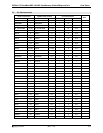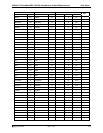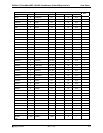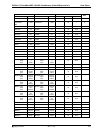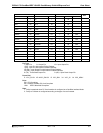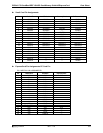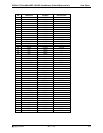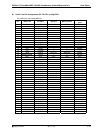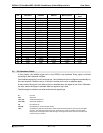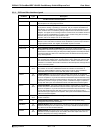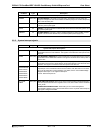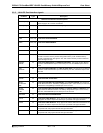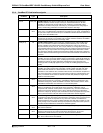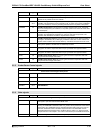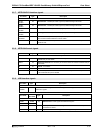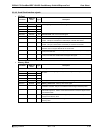
R5C841 PCI-CardBus/IEEE 1394/SD Card/Memory Stick/xD/ExpressCard Data Sheet
12345 2004 REV. 1.10 3-11
Pin 16bit Card CardBus SDCard Memory Stick
xD Picture
Card
46 A17 CAD16 — — —
47 A18 RFU — — —
48 A19 CBLOCK# — — —
49 A20 CSTOP# — — —
50 A21 CDEVSEL# — — —
51 VCC VCC VCC VCC VCC
52 VPP VPP — — —
53 A22 CTRDY# — — —
54 A23 CFRAME# — — —
55 A24 CAD17 — — —
56 A25 CAD19 — — —
57 VS2# CVS2 CVS2 CVS2 CVS2
58 RESET CRST# — — —
59 WAIT# CSERR# — MSCD# —
60 INPACK#/RFU CREQ# SDCD# — —
61 REG# CCBE3# — — —
62 SPKR#/BVD2 CAUDIO SDWP# — XDR/B#
63 STSCHG#/BVD1 CSTSCHG — — —
64 D8 CAD28 — — —
65 D9 CAD30 — — —
66 D10 CAD31 — — —
67 CD2# CCD2# CCD2# CCD2# CCD2#
68 GND GND GND GND GND
3.3 Pin Functions Outline
In this chapter, the detailed signal pins in the R5C841 are explained. Every signal is divided
according to their relational interface.
Card Interface signal pin is multi
−functional pin. Card Interface mode is configured automatically by
the card insertion; CardBus card or 16-bit card. And the pin function is redefined again.
# mark means the signal is on either active or asserted when the signal is low
−level. Otherwise,
no−mark means the signal is asserted when the signal is high−level.
The following the notations are used to describe the signal type.
IN
Input Pin
OUT
Output Pin
OUT (TS)
Three State Output Pin
OUT (OD)
Open Drain Output Pin
I/O
Input Output Pin
I/O (OD)
Input Output Pin (Output is Open Drain)
s/h/z
Sustained Tri−State is an active low tri−state signal owned and driven by one and only one agent
at a time. The agent that drives an s/h/z pin low must drive it high for at least one clock before
letting it float. A new agent cannot start driving an s/h/z signal any sooner than one clock after the
previous owner tri−state is.



